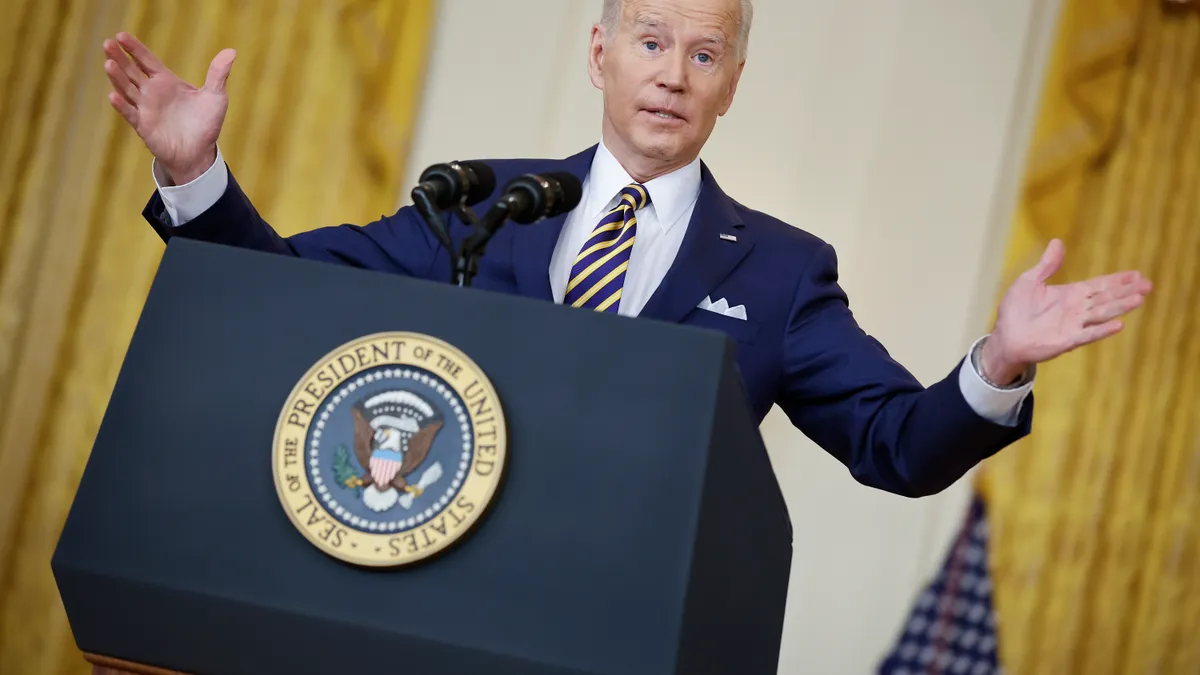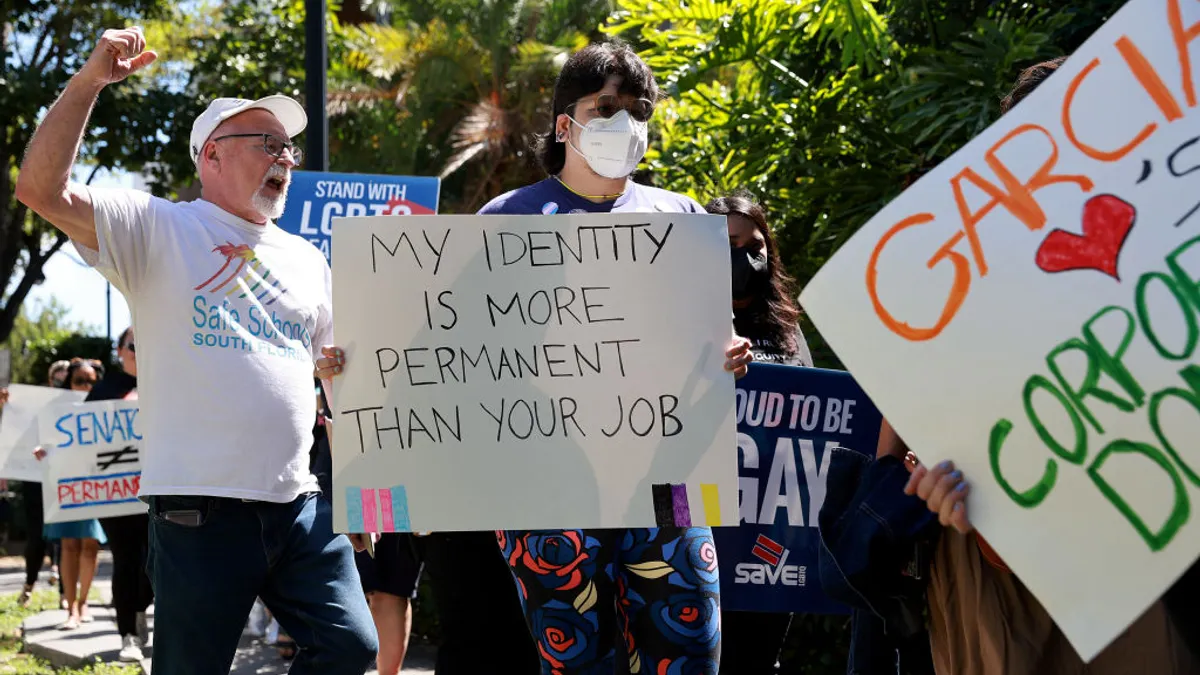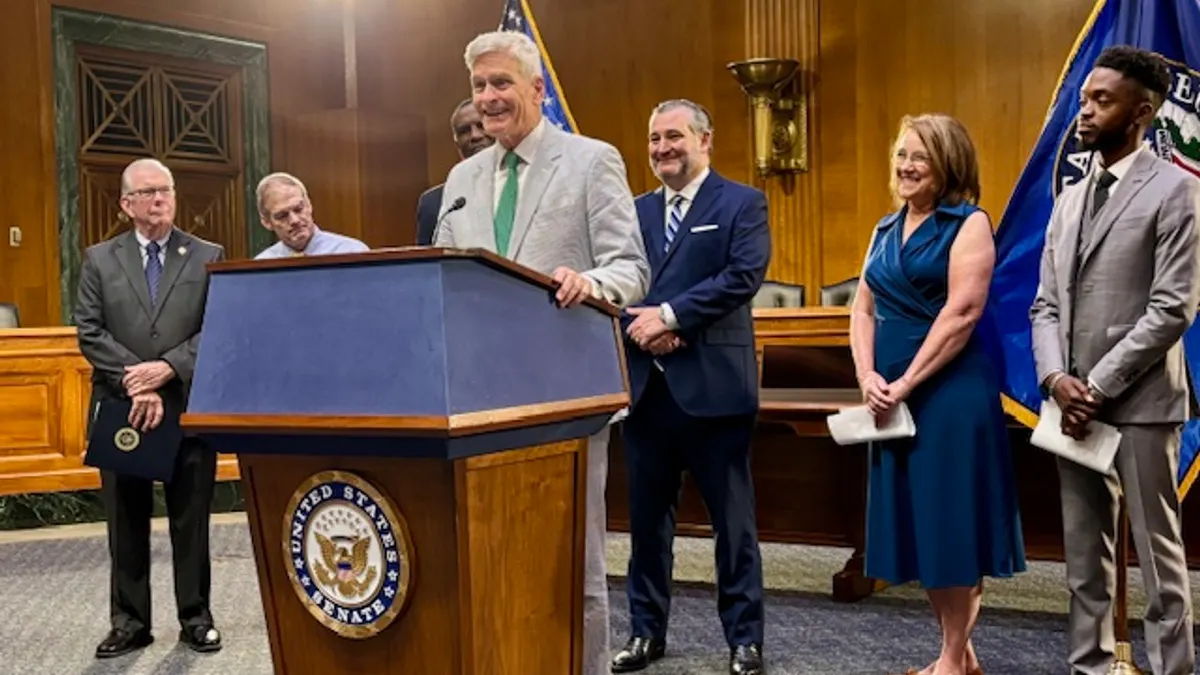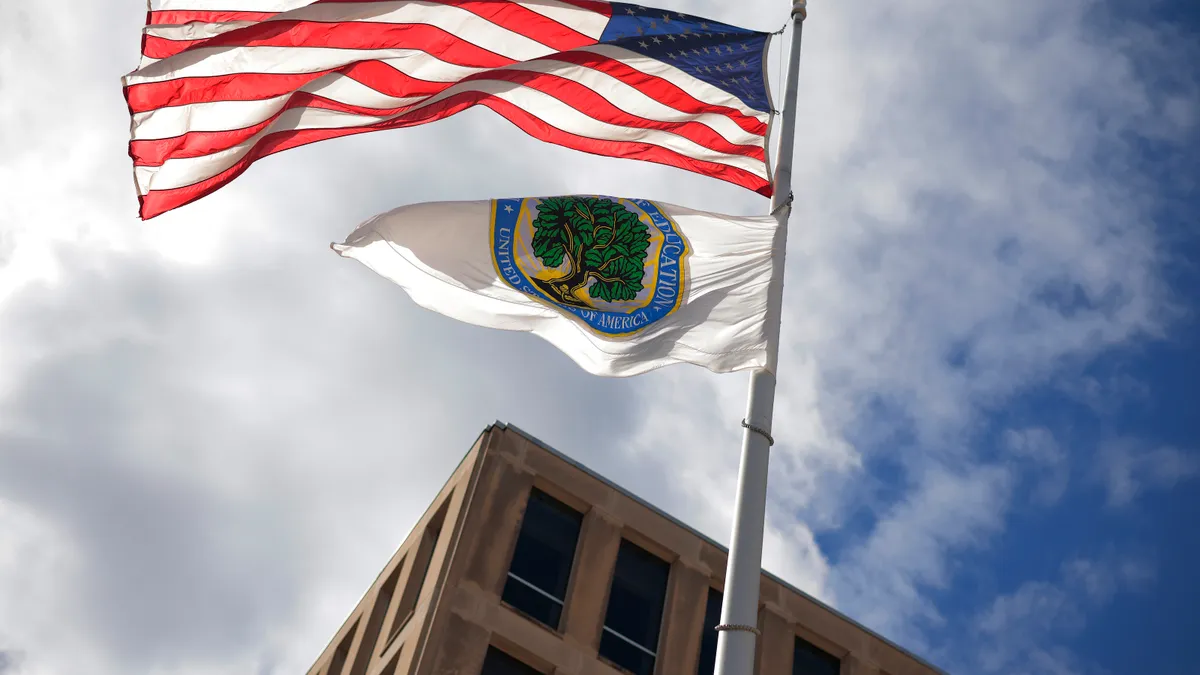Just two weeks after President Joe Biden signed into law the largest increase for federal education programs in an annual budget in more than a decade, the U.S. Department of Education aims for an even bigger investment in FY 2023 with a total of $88.3 billion in discretionary spending, a 15.6% increase from FY 2022.
The proposed budget includes increased allocations for high-poverty schools with $36.5 billion for Title I and addressing the needs of students with disabilities in pre-K-12 with spending at $16.3 billion. Additionally, the White House recommends dedicating $1 billion for increasing the number of counselors, nurses, school psychologists, social workers and other health professionals in schools.
In a statement U.S. Education Secretary Miguel Cardona said, "It’s my hope that Congress answers the President’s call for continued investments that help our schools hire and support more teachers, school counselors, and other personnel who can nurture the social, emotional, and academic development and mental well-being of our children and youth in this critical time and beyond.”
Continuing its emphasis on pandemic recovery, the Ed Department's FY 2023 spending plan seeks to improve supports and heighten equitable services for underserved communities.
Overall, the White House on Monday requested $88.3 billion in discretionary education spending, a 15.6% increase from $76.4 billion in FY 2022, for the Ed Department in fiscal 2023, which begins Oct. 1.
Of the funding proposed for pre-K-12, Title I programs for students in low-income communities topped the request at $36.5 billion, double the FY 2022 appropriation of $18.2 billion.
The president first sought to boost Title I funding to $36.5 billion in the FY 2022 request, but Congress ultimately approved the much smaller amount of $18.2 billion. The lawmakers omitted Biden's request for a new $20 billion Title I equity grants program but still boosted Title I by $1 billion over FY 2021.
Biden's ultimate goal is to triple Title I funding, said Roberto Rodríguez, assistant secretary for planning, evaluation, and policy development at the Education Department, during a Monday budget briefing in Washington, D.C.
Office of Elementary and Secondary Education budget proposal
The FY 2023 request largely mirrors last year's request, but overshoots what Congress eventually appropriated. The final FY 2022 budget was "underwhelming," said Noelle Ellerson Ng, associate executive director for advocacy and governance at AASA, The School Superintendents Association.
Still, AASA's initial reaction to Biden's newest budget request is upbeat on many of the details, such as increased requests for special education services, Ellerson Ng said.
"To the extent that Congress can finally step up and honor its commitment to special ed, that would free general dollars up to go back to the local budget," she said.
Emphasis on equity
Specifically, the budget aims to close opportunity gaps for students of color, students from low-income families, students who are multilingual, and students with disabilities, Rodríguez said.
Those gaps became even more pronounced during the pandemic as schools moved to remote learning, and as school communities continue to experience COVID-19-related trauma, said Sheila Nix, chief of staff at the Education Department, who also spoke at the budget briefing.
Denise Forte, interim CEO of The Education Trust, said in a statement that the proposed increase for federal education programs is "crucial to helping all students, particularly those most impacted by the pandemic — students of color and students from low-income backgrounds — get their academic and social-emotional needs met."
Funding under Title I would support voluntary efforts to identify and address inequities in state and local funding systems, which often favor wealthier districts over districts with concentrated poverty, the Education Department's budget justification said.
Rodríguez highlighted a $468 million proposal that includes expanding the full-service Community Schools program. The plan would add 800 community schools across the nation to provide comprehensive social-emotional, academic and health supports for 2.5 million students and their families. Biden last year made a similar request, at $443 million, but Congress approved just $75 million.
Biden's education budget requests vs. congressional allocations
Another large pocket of education spending would be reserved for special education services in fiscal 2023 under the Individuals with Disabilities Education Act. The Education Department wants to increase spending to $18.1 billion, up from $14.5 billion, for services aimed at infants, toddlers, preschoolers and school-aged children with disabilities.
For IDEA Part B state grants for school-aged children with disabilities, the budget plan asks for an increase to $16.3 billion from $13.3 billion.
If approved, that would be the largest two-year annual appropriation increase for IDEA's Part B state grants in the law's 46-year history, said Kevin Rubenstein, assistant superintendent for student services in Elmhurst Community Unit School District 205 in Elmhurst, Illinois.
But even if the request became reality, the federal contribution for IDEA would still not reach 40% of the additional cost to serve students with disabilities, or what's known as full funding. The budget request represents 15% of federal full funding for IDEA, Rubenstein said.
"It'll be a small increase overall, in terms of the percentage, but still, every amount helps," said Rubenstein, who is also the policy and legislative chair of the Council of Administrators of Special Education.
Miriam Rollin, director of the Education Civil Rights Alliance convened by the National Center for Youth Law, said there were "good things and there are some less good things" in the budget request. She was pleased to see increases for Title I and IDEA and a mandatory set-aside for student well-being, for instance, but said she was disappointed in some initiatives in the U.S. Department of Justice's budget proposal that could fund police in schools and threat assessments.
"That's unfortunate because we think that those enforcement and school hardening approaches are harmful to kids, not helpful," Rollin said.
DOJ is recommending $1 million for research to study the root causes of school violence, including the impact and effectiveness of grants made under the STOP School Violence Act, which supports school violence prevention efforts through training of school personnel and students, and through evidence-based threat assessments.
Other notable education-related budget requests include:
- Teacher recruitment and retainment: To combat a national teacher shortage crisis that disproportionately impacts students of color and students from low-income backgrounds, the Education Department is proposing $514 million for an Education Innovation and Research program. Additionally, Rodríguez said the budget includes $40 million to recruit and train school leaders.
- Social, emotional and mental health support: The proposed spending plan includes $1 billion for a new School-Based Health Professionals program to add counselors, nurses, school psychologists, social workers, and other health professionals in schools. This is proposed funding that would require authorizing legislation.
- Head Start: Although funding for Head Start falls under the Department of Health and Human Services, school systems work closely with Head Start providers to support early childhood education for students from low-income families. The White House is proposing to provide $12.2 billion for Head Start, an increase of $1.5 billion over the 2021 enacted level.
- Charter school grants. The president's budget recommends level funding for federal support for creating charter schools, at $440 million. Nina Rees, president and CEO of the National Alliance for Public Charter Schools, said in a statement that the request is disappointing, especially since charter school enrollment grew by 7% during the 2020-21 school year.
- Office for Civil Rights: To build capacity to protect equal access to education through the enforcement of civil rights laws, the proposed budget recommends a 23% increase to $161 million for the office.
Federal contributions
According to the Congressional Budget Office, the federal government provides 8.5% of all K-12 funding. In 2019, state governments had the largest contributions to public school funding at 46.7% or $350.9 billion, according to the U.S. Census Bureau.
But when considering direct student spending, local districts pick up much of the costs. In 2019, 99% of all direct spending on elementary and secondary education came from local governments, according to the Urban Institute.
Requested discretionary spending compared to pre-pandemic funding levels
Even though the federal contribution is a small percentage, it's essential for school operations, say education advocates.
For instance, Ellerson Ng suggests imagining the impacts of a household budget being cut by 10%. That's the same hardship that would be felt by local districts if federal funding were severely trimmed.
"I think the other thing that's important here is these programs come with funding, but sometimes not all the funding they need to run them," she said, giving IDEA services as an example of an "unfunded mandate."
Rubenstein said change sometimes happens incrementally. "We have to focus on really making sure that every year that Congress and the president are working together to make sure that they add additional dollars to the IDEA funding line and so that's what this budget does," he said.
Administration officials will present the department's budget on Capitol Hill, where the budget's fate will be determined by Congress.
Anna Merod and Naaz Modan contributed to this story.








 Dive Awards
Dive Awards













